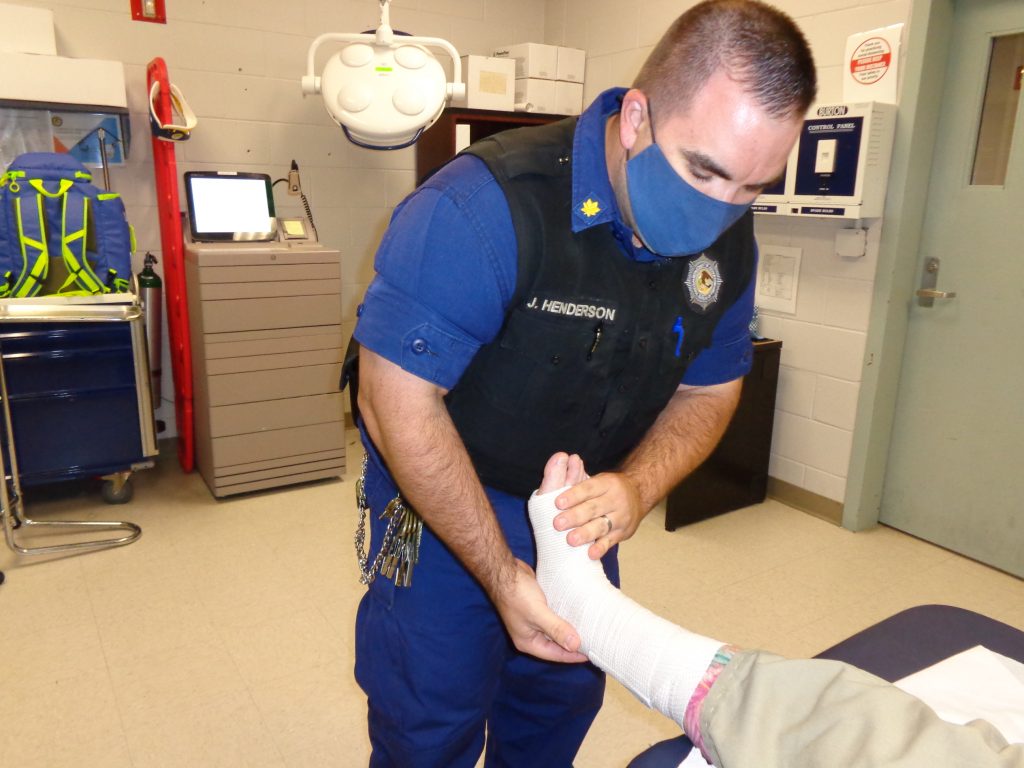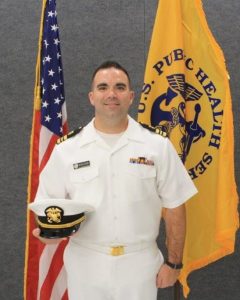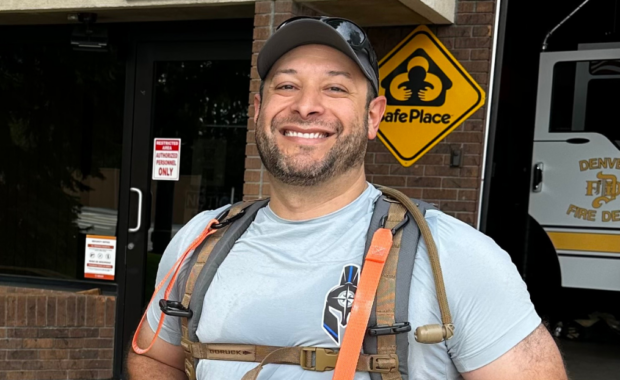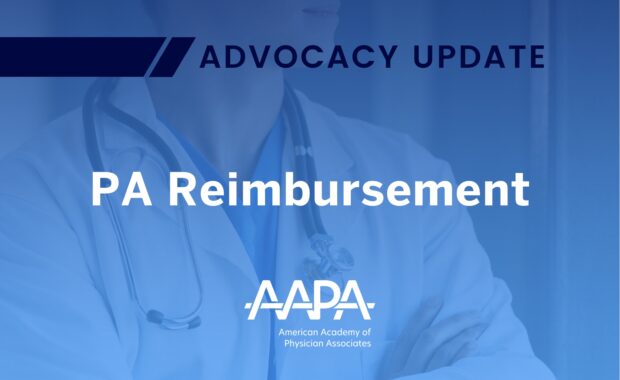A Day in the Life of a PA in the Bureau of Prisons
PA Joshua Henderson Serves at Federal Correctional Complex
November 5, 2021
By LCDR Joshua L. Henderson, MSPAS, PA-C
I first found out about the PA (physician associate/physician assistant) profession during undergraduate school in an introduction to health sciences class. At the time I was working as a student athletic trainer and immediately knew I wanted to go to PA school and work in orthopaedics, due to my interest in acute musculoskeletal injuries and trauma.
During PA school at the University of Kentucky, I learned about the United States Public Health Service (USPHS) and job opportunities in the Federal Bureau of Prisons (BOP) and was intrigued. After completing a clinical rotation in a local federal prison, I knew that I could combine my interest in orthopaedics with my desire to serve my country – and the underserved population in the prison system. Therefore, in January of 2011, I started my career in the BOP. I then transitioned into the USPHS in February of 2016.

I have served my entire career at the same location in Central Florida at the Federal Correctional Complex (FCC) in Coleman, Florida. FCC Coleman is the largest federal correctional complex in the United States and has four institutions within the complex that consist of two separate high-security penitentiaries, one medium-security institution, and one low-security institution that also includes a separate minimum security prison camp. I primarily serve as a clinical PA at one of the high-security penitentiaries, United States Penitentiary Coleman II, better known locally as USP 2.
A Day as a PA working in a high-security penitentiary
A disclaimer: Obviously the COVID-19 pandemic has changed the daily running of the prison operations, and thus my normal duties, significantly. This is what a typical day looked like prior to the pandemic.
My typical day starts at 7:30 a.m. and ends at 4:00 p.m., but what happens between those hours can be vary wildly. The Health Services Unit inside the institution is essentially the combination of an urgent care center and a primary care office, capable of managing both chronic ambulatory and emergent patients. In short, my patients sign up for what is known as “sick call” in order to get an appointment scheduled (or be seen urgently if indicated based on triage, which is typically performed by our nursing staff).
[Wherever you want to go in your career, AAPA can help – join or renew your membership today]
When I arrive at my office, I will start by seeing any urgent cases first (typically acute infections requiring evaluation by a provider for treatment that day). Then, I receive a list of my appointments for the day (known as “call outs”) that are scheduled in groups based on time blocks (e.g. three patients at 8:30 a.m., three patients at 9:30 a.m.), as inmates are on a movement schedule at these hourly intervals.
When an inmate is scheduled to see me, they come up to the Health Services waiting room when the movement is announced at their appointment time. I will then retrieve them from the waiting room when ready and see them for their appointment just like a typical private practice or urgent care office. If all goes well throughout the day, I will see all my scheduled appointments throughout the day without interruption and finish all my documentation in time to go home at 4:00 p.m. However, in a penitentiary, those are not necessarily typical days.

One of the things I have loved about my career as a PA in a federal penitentiary is the fact that every day is different and you honestly never know what the day will bring. All full-time staff in the institution are considered correctional workers first, and thus carry a radio with what is known as a “body alarm” that can be pushed if ever there is an emergency situation or a perceived danger. In a penitentiary setting, these alarms typically are activated multiple times each week and sometimes multiple times per day. When this alarm goes off, all staff respond to where the emergency is – if I am with a patient, I will escort the patient back to the waiting room and then respond – to ensure the situation is contained and help is present if needed.
We often respond to inmate fights, sometimes with weapons, but also respond to medical emergencies such as an inmate being unresponsive due to a diabetic emergency or cardiac arrest. Once the situation is deemed safe and under control, I provide medical care to the inmates needing it – whether that be repairing lacerations, evaluating for concussions, administering naloxone, performing chest compressions, or whatever the situation requires. I go from primary care PA to emergency department PA within a matter of minutes, and I love the diversity it provides in my day!
The aspect of working with this particular patient population that I have enjoyed the most is the opportunity for patient education. The majority of my patients have never had health insurance or access to good healthcare. In general, many did not finish high school or even if they did, have had very limited exposure to health literacy or basic knowledge of nutrition or over-the-counter medications. I find it extremely rewarding getting to be the provider that can educate these patients on their specific diagnosis, medications, lifestyle modifications, etc., that often times I previously just took for granted, thinking many of these things were simply common knowledge. Working with this patient population has truly made me a more well-rounded provider and has given me the opportunity to focus more on patient education, which has been one of the most satisfying parts of my career thus far.
Future Aspirations
As much as I have enjoyed working in my current role for over a decade, I am also excited about multiple areas of expansion for my career as a PA working within the BOP.I completed my DATA 2000 Waiver last year and currently serve as a regional clinical consultant for the Medication Assisted Treatment program within the BOP. I also currently serve as a co-lead on the Health Services Division Telehealth Advisory Group.
I am very excited to see the growth of these two programs in the BOP and the future career potential each of these areas may provide. The BOP provides so many excellent opportunities for growth as a PA; I can’t wait to see what a day in my life as a PA in the BOP may look like in a few years!
Opinions expressed in this article are those of the author and do not necessarily represent the opinions of the Federal Bureau of Prisons or the Department of Justice.
You May Also Like
Meet Two PAs Who Created a Free Mobile Clinic for Uninsured Patients
Here’s How Every PA Can Play a Role in Mental Healthcare
How COVID-19 Impacted PA Salaries
Thank you for reading AAPA’s News Central
You have 2 articles left this month. Create a free account to read more stories, or become a member for more access to exclusive benefits! Already have an account? Log in.


